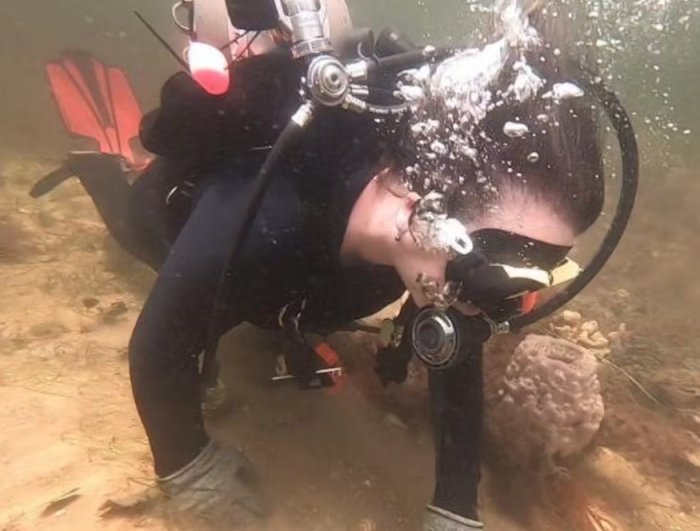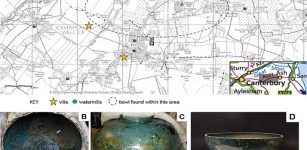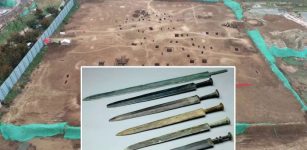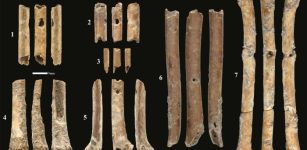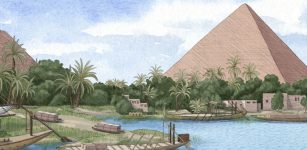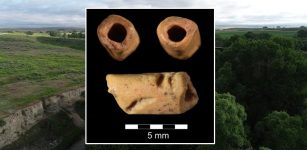Scientists Search For North America’s ‘Atlantis’ – Submerged Landscapes In The Gulf Of Mexico Studied
Jan Bartek - AncientPages.com - The end of the last Ice Age 11,700 years ago resulted in widespread global flooding due to melting ice and rising sea levels. One of the most well-known submerged areas is Doggerland, a vast expanse of land that once connected England to continental Europe. However, numerous similar regions exist worldwide.
Credit: Adobe Stock - Kateryna Kordubailo
A significant area south of the present-day United States was also impacted by this flooding event. This region, which is now underwater, was once a thriving ecosystem teeming with diverse plant and animal life and human settlements.
Due to its rich historical and ecological significance, this submerged landscape has been dubbed "North America's Atlantis" by some researchers. A major scientific initiative is now underway to map this submerged archaeological landscape.
Underwater archaeologist Jessica Cook Hale during a previous trip to the Gulf of Mexico. Credit: University of Bradford
The University of Bradford has joined forces with several American institutions on a project to enhance techniques for identifying underwater landscapes in the Gulf of Mexico. This five-year endeavor has received substantial funding of $1.5 million (£1.1m) from the US Federal agency, the Bureau of Ocean Energy Management (BOEM).
The primary objective of this project is to locate and investigate submerged archaeological sites in the region that was once dry land during the last Ice Age but has since been inundated due to rising sea levels. This research aims to provide valuable insights into the area's prehistoric environment and human occupation.
Offshore surveys are scheduled to occur in the Gulf of Mexico, encompassing the coastlines of Texas, Louisiana, Mississippi, Alabama, and Florida. Additionally, divers will conduct in-depth analyses at previously documented archaeological locations along the Gulf Coast to enhance current analytical methodologies.
Dr. Simon Fitch and Dr Jess Cook Hale, from the University of Bradford’s Submerged Landscapes Research Centre, will be taking part in the project in the Gulf of Mexico. Credit: University of Bradford
As part of this initiative, the University of Bradford's Submerged Landscapes Centre plans to recruit an international PhD student in 2025. This student will dedicate three years to working on the project. The university is particularly interested in candidates with an Indigenous background or those with substantial experience collaborating with Indigenous communities.
"It’s really exciting. People from Indigenous backgrounds have a culture that stems back tens of thousands of years.
As a broader society, we’ve not paid as much attention to that as we should have done. It’s important to acknowledge it. It is part of their history and culture," Dr. Simon Fitch from the University of Bradford’s Submerged Landscapes Research Centre said in a press release.
Submerged archaeological sites in the Gulf of Mexico present ongoing challenges for researchers, with fewer than 50 documented locations, many in partially disturbed states. This scarcity of data persists despite over a century of archaeological investigation into pre-sea level rise human habitation.
Identifying and analyzing more submerged sites is essential to advance our understanding of these historical periods and improve cultural heritage management.
The initiative also focuses on educating future specialists in submerged landscape archaeology. Up to 24 students will receive training in various relevant disciplines, including geophysics, modeling, geoarchaeological sampling, and recording techniques.
Dr Jess Cook Hale, from the University of Bradford’s Submerged Landscapes Research Centre. Credit: University of Bradford
The project will actively recruit students from disadvantaged backgrounds and historically underrepresented groups to promote diversity in the field. Additionally, the project plan includes annual training and analysis workshops with Tribal communities, fostering collaboration and knowledge exchange throughout the study.
The Gulf of Mexico coastal plain had a vastly different landscape during the last ice age. As the era ended, many species went extinct or migrated. The region transformed from coastal plain to wetlands, then submerged as sea levels rose over 100 meters. During these changes, Indigenous peoples inhabited the Americas, including the now-submerged coastal plain. They adapted to environmental shifts and flooding landscapes as the ice age ended.
See also: More Archaeology News
“The Gulf has a long history of offshore development in oil and gas prospection that is now evolving into green initiatives such as offshore wind.
It is critical that Tribal Nations be at the forefront of caring for these landscapes going forward, and we’re really pleased to be part of a project that can support that effort," Dr. Cook Hale from the University of Bradford’s Submerged Landscapes Research Centre said.
Written by Jan Bartek - AncientPages.com Staff Writer


